1. Yes, goats truly climb trees
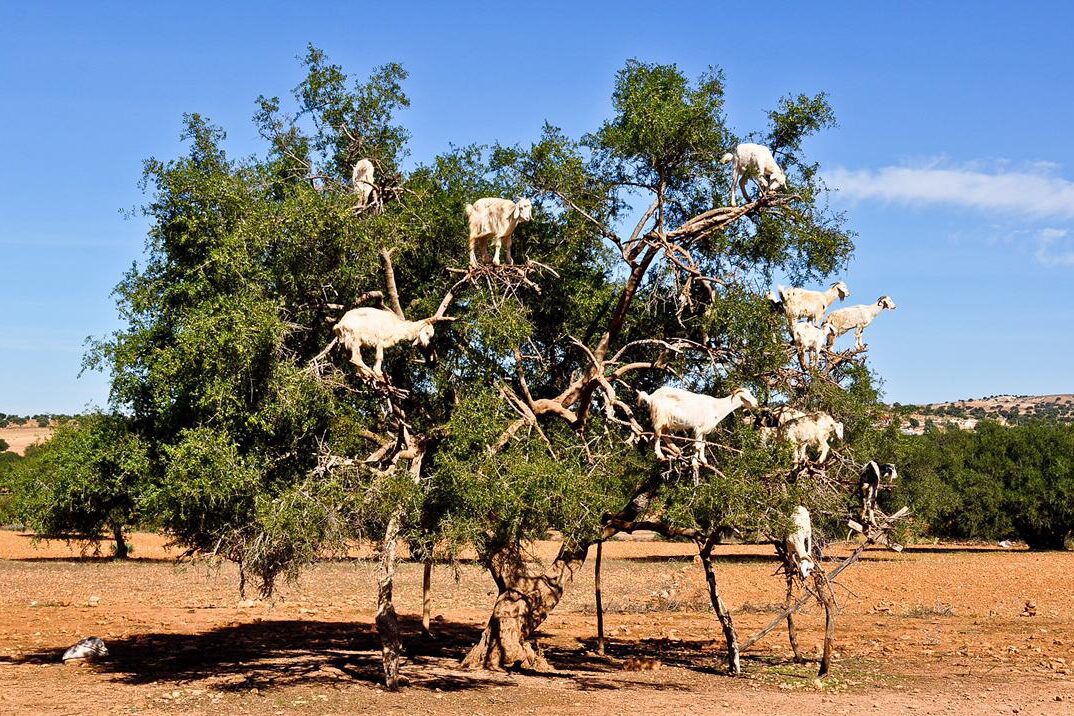
These goats aren’t a desert myth. In Morocco, entire herds scramble into trees like nimble acrobats, turning survival into something that looks almost magical. But behind the odd sight lies an ecological partnership that keeps one of the world’s rarest trees alive.
In southwestern Morocco, especially around the Sous Valley, goats are known to climb the thorny branches of argan trees. Locals and visitors alike are often startled by the sight of dozens of animals perched high above the ground, nibbling away at olive-like fruits. While it might look like circus training, this behavior is a natural response to survival in an arid desert climate where ground vegetation is limited. The goats’ agility is remarkable: they balance on slender, twisting branches with the ease of cats, sometimes forming entire clusters in the same tree. For centuries, farmers and herders have lived alongside this sight, treating it as a normal part of the landscape. To the outside world, though, it feels like witnessing a storybook scene brought to life.
2. The tree is the argan, a desert lifeline
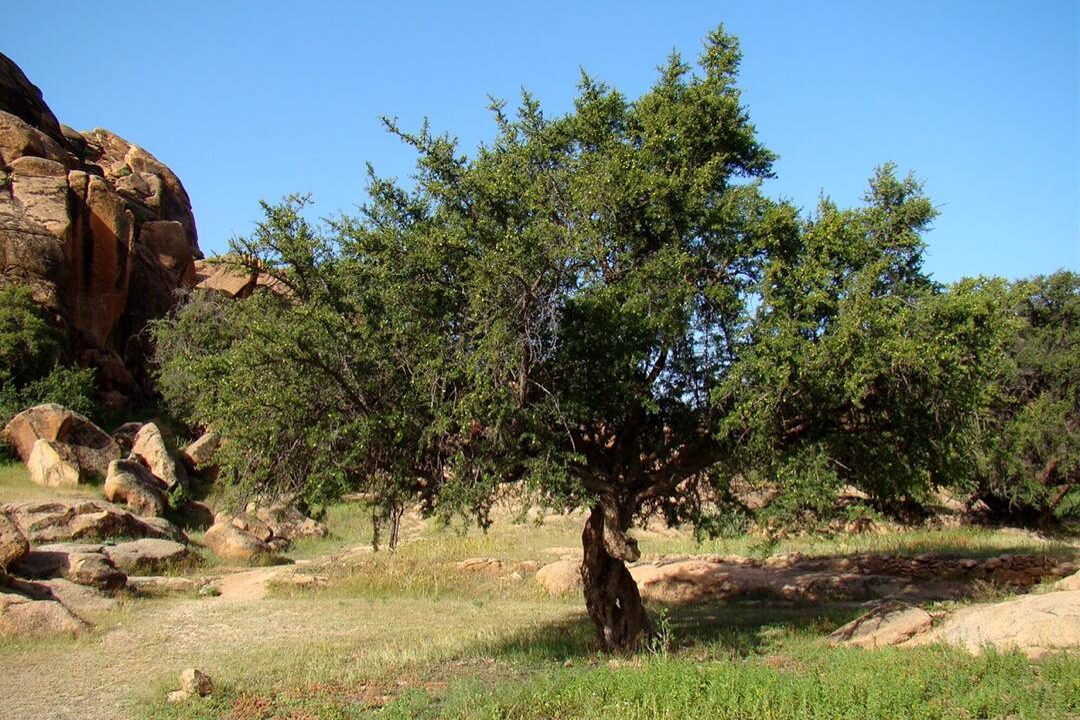
The goats’ climbing feats wouldn’t be possible without the argan tree, a hardy species native only to Morocco. Known scientifically as Argania spinosa, this tree is more than just a snack source for goats, it is the backbone of the local ecosystem. Its deep roots stabilize sandy soils against erosion, making it critical in holding desert expansion at bay. The fruits yield argan oil, a product valued both in Moroccan kitchens and in global beauty industries. Local communities often rely on argan groves for shade, fuel, and a source of income, making them central to culture as well as ecology. Without these trees, the fragile desert environment would lose an anchor species, and the goats would lose the very branches that sustain them. In many ways, the argan is a survival partner for humans and animals alike.
3. Goats aren’t just showing off, they’re hungry
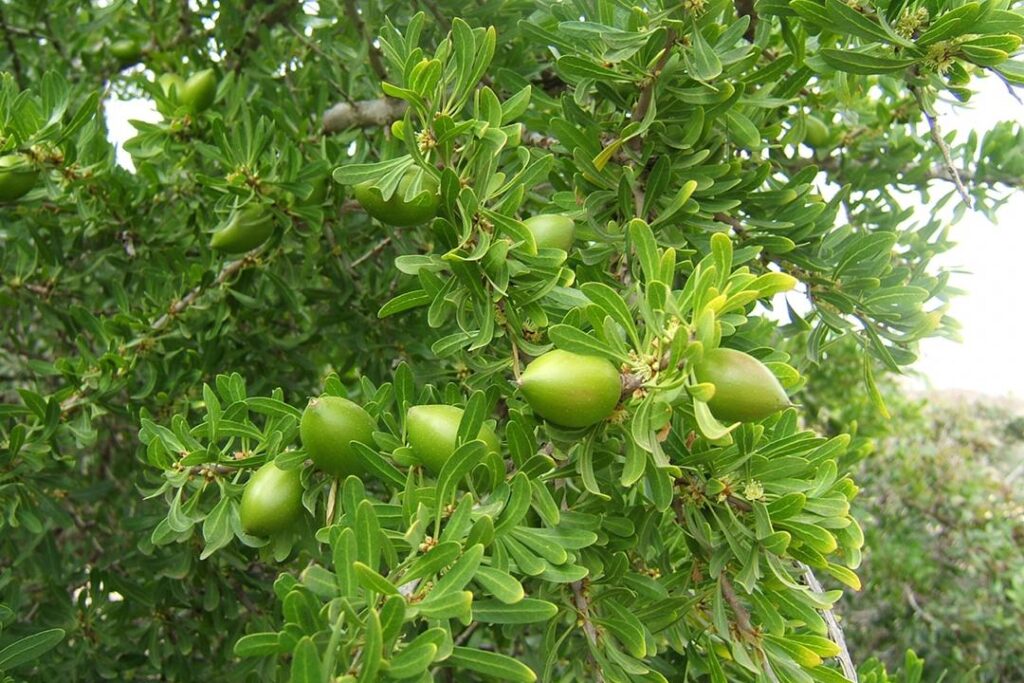
The climbing isn’t a quirky stunt, it’s born of necessity. In drought-prone Morocco, especially during harsh summers, food on the ground grows scarce. Goats turn to argan trees because their fruits remain available when other forage disappears. Each fruit has a fleshy pulp surrounding a hard nut, and while the goats mainly go for the pulp, the climb itself is a matter of survival. Herders know this behavior well and sometimes plan grazing routes near argan groves so their animals can feed. This makes the goats’ tree-scaling skills not just fascinating but vital for keeping them nourished through the toughest times of the year. What looks like a bizarre desert show is really an act of endurance in a place where resources are stretched thin.
4. But it’s humans pushing them up
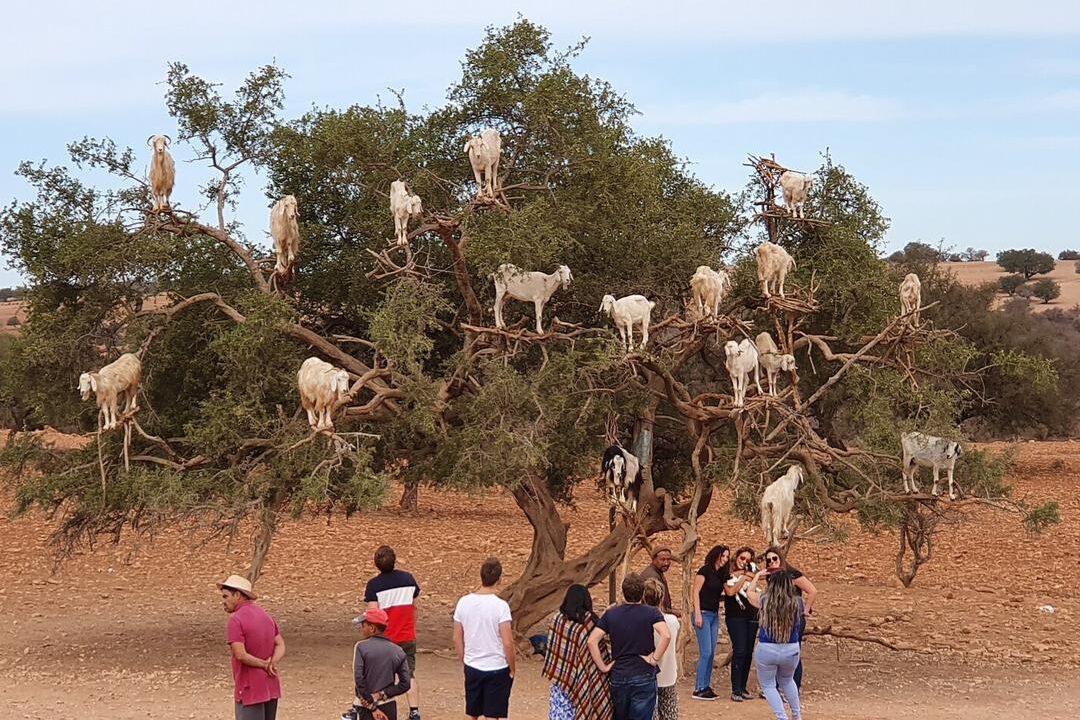
While tree climbing is natural, not every goat you see perched in the branches got there by choice. Some herders have realized that tourists are eager to photograph the sight, leading them to train or even lift goats into trees for staged pictures. In these cases, goats may be left standing on the branches for hours, not for food but for spectacle. Conservationists point out that this practice is less about survival and more about social media appeal, raising concerns about animal welfare. For travelers passing through Morocco, it can be difficult to tell whether the goats are genuinely foraging or simply posing. The distinction matters, because when humans force goats into trees, the natural balance between animal and environment becomes overshadowed by profit-driven display.
5. Goats spit out seed, and most of those spat-out seeds can grow
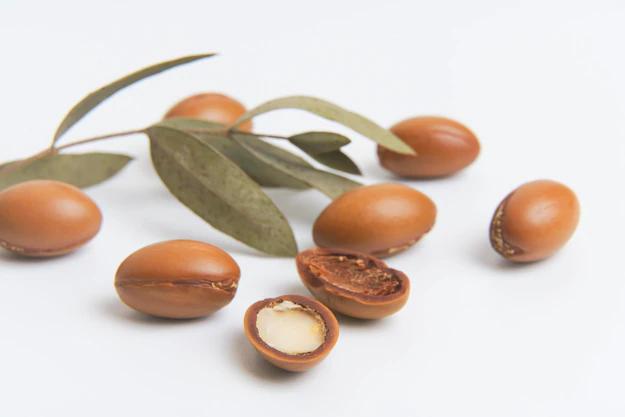
When researchers collected argan seeds expelled by goats, they discovered that most remained alive and capable of sprouting. In fact, one study found that about 71 percent of the spat seeds were viable, compared to far fewer that made it through digestion. This makes goats unusually effective partners in seed dispersal, since they can spread fertile seeds across a wide area while grazing. Imagine a herd moving from grove to grove, leaving behind dozens of potential new trees each day. In a desert environment where regeneration is difficult, this simple act of spitting seeds is an ecological gift. It means that goats aren’t just eating from the argan, they’re quietly planting the future of the forest with every mouthful.
6. A forgotten seed-spreading strategy
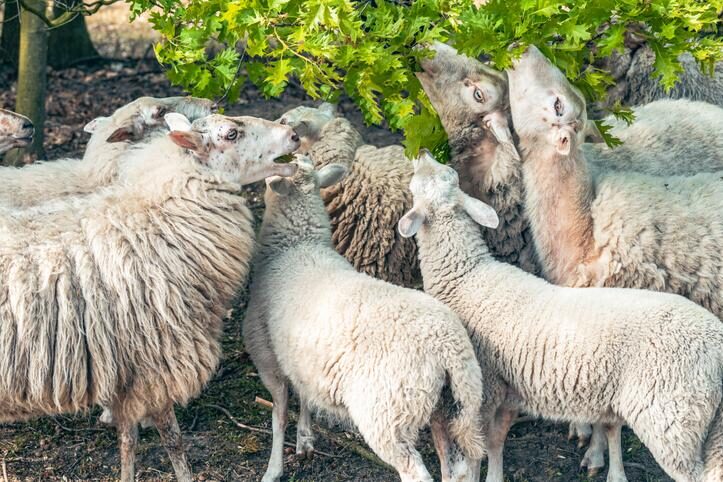
Goats may not be alone in this behavior. Ecologists have noted similar regurgitation-based dispersal in other ruminants like sheep and deer, but it rarely gets attention in scientific studies. The focus has often been on fruit-eating birds or mammals that swallow seeds whole and deposit them in droppings. Yet spitting may be just as important in keeping plant populations healthy. In Morocco, the goats’ role is especially visible because the argan tree is so iconic and limited to a small region. Still, their behavior reminds us that there are hidden layers to how ecosystems work, many of which remain overlooked. What seems like an odd quirk could actually be a widespread but underappreciated natural strategy for spreading life.
7. Eco benefit versus ecological cost
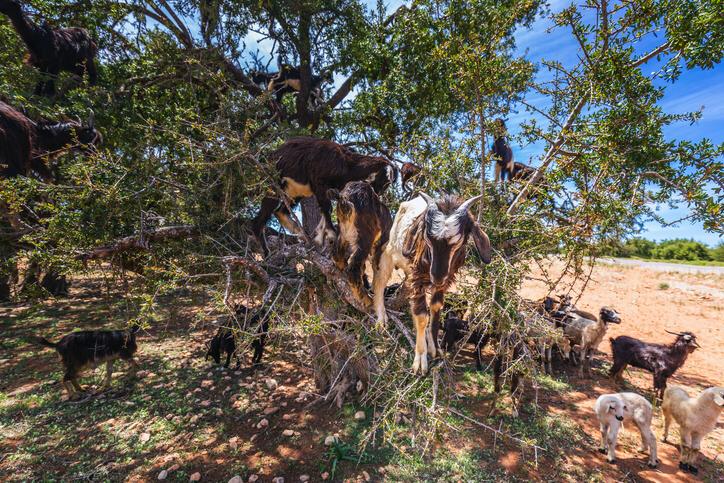
As helpful as goats are in dispersing seeds, their growing populations also pose risks. When too many goats feed in the same groves, they can overgraze young shoots and trample seedlings before they have a chance to establish. This undermines the very regeneration they help spark. With the rise of argan oil demand and tourism, herders often keep larger herds, adding pressure on fragile landscapes. Conservationists are now grappling with this balance: how to protect the goats’ role as natural planters without allowing their numbers to overwhelm the forest. It’s a delicate equation, showing that even nature’s clever partnerships can become strained when human activity amplifies the pressure.
8. Argan oil, the glamorous payoff
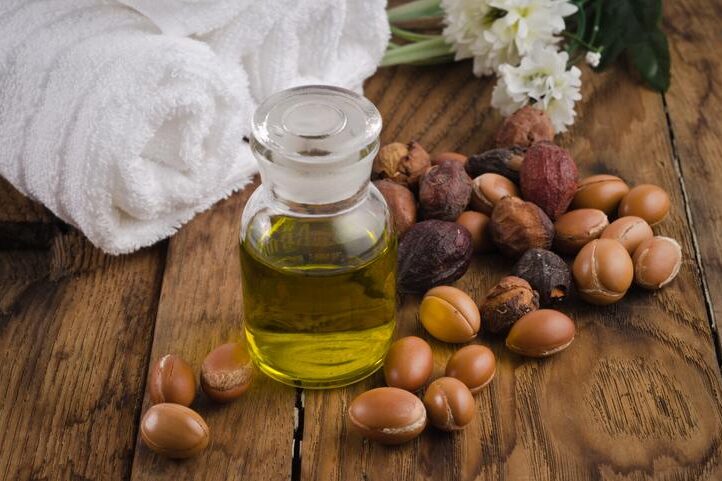
The argan seeds that goats help spread or expose eventually become the source of Morocco’s most famous export: argan oil. Once collected and pressed, the kernels inside the seeds yield a rich, golden oil celebrated for its nutty flavor in cooking and its moisturizing properties in cosmetics. Today, argan oil is a global product, appearing in everything from luxury shampoos to high-end skin serums. What’s remarkable is that part of its journey may begin with a goat chewing fruit in a desert tree. Locals have long recognized this link, turning what might seem like a messy process into a vital part of a thriving industry. It’s a reminder of how nature, animals, and culture are interconnected in unexpected ways.
9. A messy natural partnership
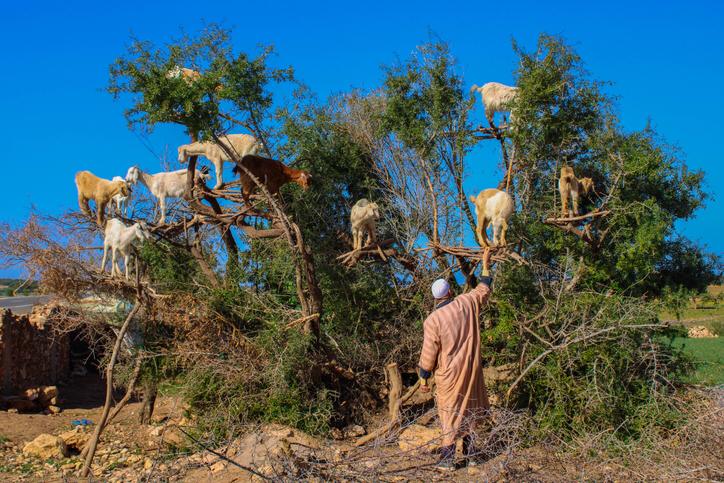
At its core, the relationship between goats and argan trees is a partnership shaped by need. Goats climb the trees for food when the desert offers little else, and in return, the trees gain a seed disperser to help them spread. But when humans intervene, whether by encouraging large herds, staging goats for tourist photos, or harvesting oil at unsustainable rates, the balance can tip. What was once a simple exchange between animal and plant becomes more complicated, caught between tradition, commerce, and conservation. Still, seeing goats silhouetted against the sky on a tree branch captures something timeless: the ingenuity of life adapting in harsh places, weaving survival and renewal into one scene.
This story 9 Surprising Things You Didn’t Know About Tree-Climbing Goats That Plant Trees (Literally) was first published on Daily FETCH


